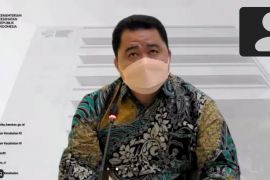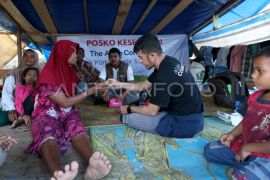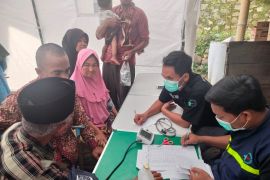"Indonesia has had the first cases of Legionella in Bali in 1996, and in Tangerang in 1999, as well as other cities," Director General of Disease Prevention and Control (P2P) of the Health Ministry Maxi Rein Rondonuwu stated in Jakarta, Monday.
He noted that the classification of Legionella as New-EIDs had been stipulated in Decree of the Minister of Health Number 1538/Menkes/SK/XI/2003 that was signed by the health minister in the era, Achmad Sujudi.
"Legionella is an acute bacterial infection that can threaten public health and has the ability to trigger an outbreak. It must be anticipated and prevented from spreading quickly," Rondonuwu emphasized.
According to the decree, Legionella is an acute bacterial respiratory infection affecting humans. Only a total of 20 species are known and the cause of Legionellosis is Legionella pneumophila.
Legionella disease was first reported in Philadelphia, the United States, in 1976, with 182 cases and 29 deaths, or 15.9 percent, and was the first epidemic to hit the world.
From the results of a survey in 2001 on samples of towers of cooling water in hotels in Jakarta and Denpasar, it was found that almost 20 percent of the cooling system water management staff had been exposed to Legionella bacteria.
Legionella bacteria commonly live in seawater, fresh water, rivers, mud, lakes, hot springs, clean water puddles, cooling water systems in high-rise buildings, hotels, spas, hot water system reservoirs in homes, and artificial fountains that are not well-maintained, with the presence of sediments, slime, algae, mold, rust, scale, dust, and dirt.
These bacteria are also found in hospital equipment, such as breathing support machine.
Rondonuwu remarked that Legionella pneumophila is a Gram-negative, rod-shaped bacterium that lives in colonies by attaching to rubber and plastic pipes that are mossy and resistant to chlorine, with a chlorine concentration of 2-6 mg/l.
Legionella bacteria can live at temperatures between 5.7 °C and 63 °C and thrives at temperatures of 30 °C to 45 °C.
The Legionella bacteria is transmitted to humans through aerosols in the air or by drinking water containing Legionella bacteria, among other factors.
Transmission can also occur through the aspiration of contaminated water, direct inoculation through respiratory therapy equipment, and compressing wounds with contaminated water. The incubation period for the virus ranges from one to 10 days.
"The place where Legionella bacteria exists is very close to human life, so it is possible that extraordinary events can occur in our society," he affirmed.
The presence of Legionella bacteria in hospital facilities that are not managed properly can also cause nosocomial infections.
To prevent the development of Legionella bacteria, water reservoirs must be checked at least once a week to check physical damage, odor and organic substances, and also powders containing Legionella bacteria.
The World Health Organization (WHO) is currently monitoring the development of a cluster of mysterious pneumonia cases linked to Legionella in Tucuman Province, Argentina.
The Pan American Health Organization (PAHO) reported that a total of 11 cases had been identified, including four deaths in patients with comorbidities in the local area.
Related news: Ministry unveils BGSi to detect potential diseases in future
Related news: Minister urges parents to immunize children to prevent diseases
Translator: Andi Firdaus, Resinta S
Editor: Rahmad Nasution
Copyright © ANTARA 2022












